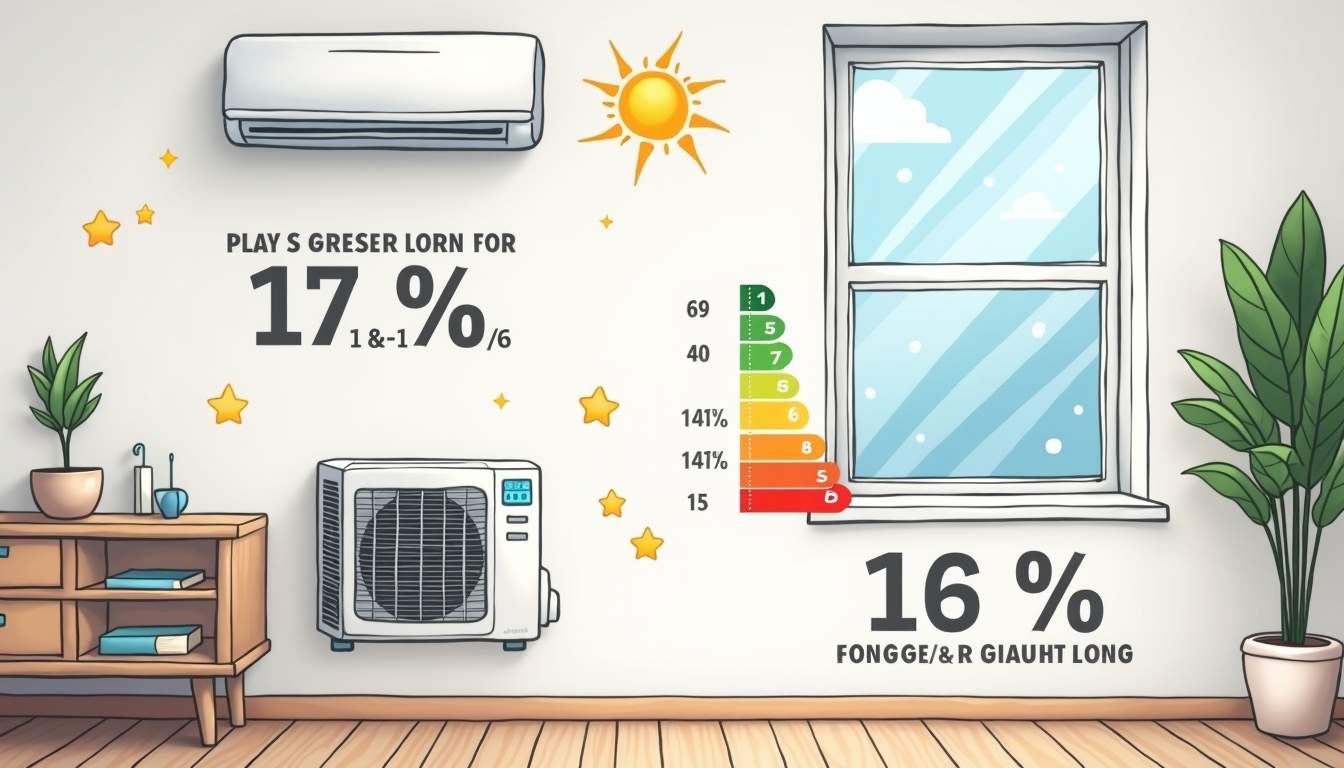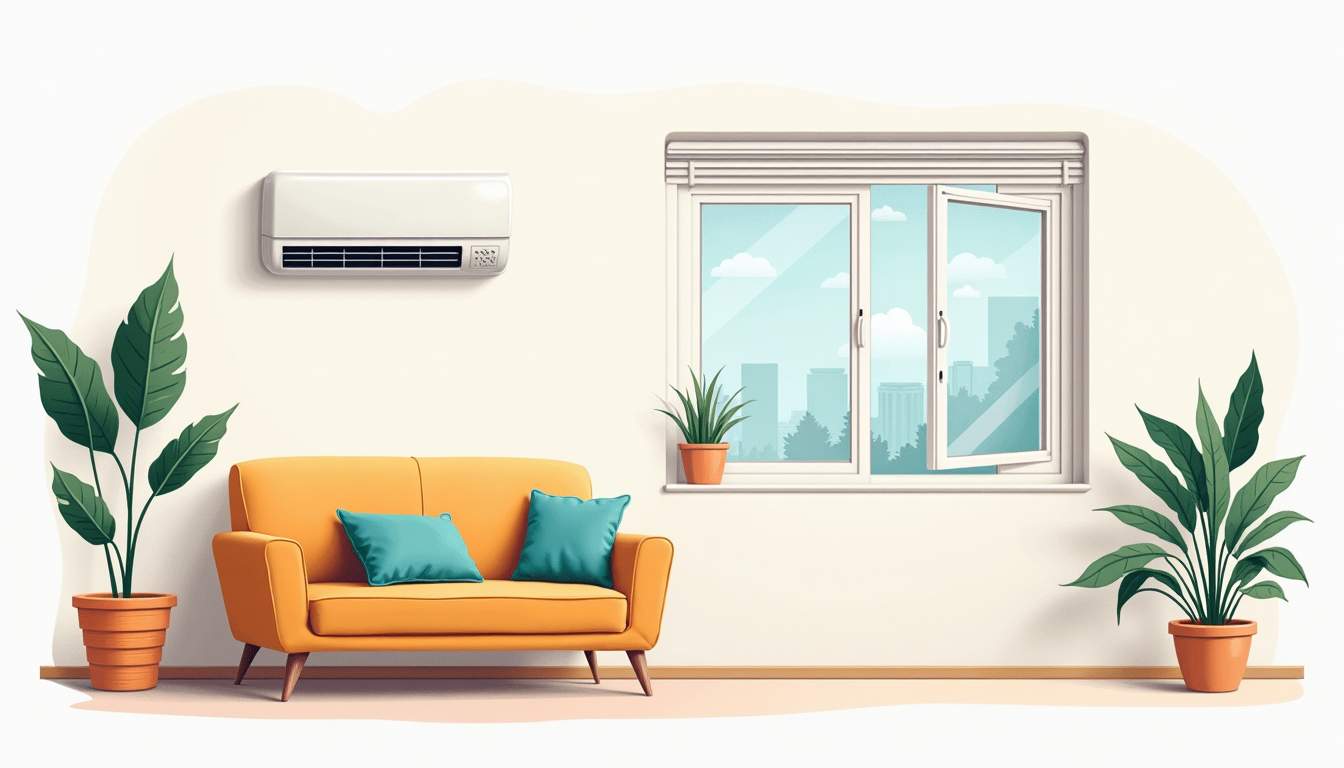
Choosing the right air conditioner can make a huge difference in comfort, energy bills, and even your home’s look. When it comes down to split air conditioners versus window air conditioners, there’s a lot to consider. Both have their fans, but they serve different needs and spaces. Let’s break down what sets them apart and help you figure out which one fits your lifestyle and space best.
Understanding the Basics: What Are Split and Window Air Conditioners?
Split Air Conditioners: The Quiet Cool
Split air conditioners are made up of two main parts: an indoor unit and an outdoor compressor. The indoor unit is sleek and mounted on a wall, quietly blowing cool air into your room. The compressor, which is the noisy part, sits outside your home, keeping the indoor environment peaceful.
This setup allows split aircons to cool rooms efficiently without the loud hum that window units often produce. Installation is more involved since it requires drilling holes for pipes and wiring, but the result is a system that blends seamlessly with your interior. Additionally, many split systems come equipped with advanced features such as programmable timers, remote controls, and energy-saving modes, making them not only convenient but also efficient. With the ability to control the temperature in individual rooms, split air conditioners are ideal for larger homes or spaces where different areas may require varying levels of cooling.
Window Air Conditioners: The All-in-One Solution
Window air conditioners are compact, self-contained units that fit directly into a window or a specially made wall opening. Everything—the compressor, condenser, and evaporator—is housed in one box. This design makes window aircons easier to install and often more affordable upfront.
They’re a popular choice for renters or those who want a quick cooling fix without major installation. However, they tend to be noisier and can block part of your window, cutting down on natural light and views. Despite these drawbacks, window air conditioners have evolved over the years to include features like energy efficiency ratings and adjustable fan speeds, which can help mitigate some of the noise and improve overall comfort. Moreover, many models now come with built-in air purifiers, which can filter out allergens and pollutants, making them a practical choice for those concerned about indoor air quality. Their portability also allows for easy removal and storage during the cooler months, adding to their appeal for those living in temperate climates. If you’re considering professional maintenance or installation, you can visit LS Aircon Servicing for reliable and expert support.
Installation and Space Requirements
Split Aircon Installation: Professional and Permanent
Installing a split air conditioner usually requires a professional technician. The indoor and outdoor units need to be connected through refrigerant lines, electrical wiring, and drainage pipes. This means drilling holes through walls and ensuring a proper fit for both units.

Because of this, split aircons are considered a more permanent solution. Once installed, they stay put, making them ideal for homeowners who want a long-term cooling system without the hassle of moving the unit seasonally. Additionally, split air conditioners often come equipped with advanced features such as programmable thermostats, multiple cooling modes, and even air purification systems, enhancing indoor air quality and comfort. The outdoor unit is typically placed in a location that maximizes airflow and minimizes noise, which can sometimes require careful planning to ensure it doesn’t disrupt the aesthetics of your property.
Window Aircon Installation: DIY-Friendly but Limited
Window air conditioners are designed for simpler installation. Most units slide into a window frame and are secured with brackets or screws. Some models come with adjustable side panels to seal gaps and keep the cool air in.
This ease of installation makes window aircons a favorite for renters or those who want to avoid professional fees. However, they require a suitable window, and not all window types or sizes will accommodate every model. Also, they’re generally not suited for large spaces. Furthermore, window air conditioners can obstruct the view and may require removal during the colder months, which can be inconvenient. It’s also worth noting that while they can effectively cool a single room, their energy efficiency may not match that of split systems, especially in larger or multi-room settings. Therefore, homeowners should carefully assess their cooling needs and space before making a decision.
Cooling Performance and Efficiency
How Split Aircons Keep You Comfortable
Split air conditioners typically offer better cooling performance for larger rooms or multiple rooms when paired with multi-split systems. They use inverter technology in many models, which adjusts compressor speed to maintain a consistent temperature without wasting energy.

Because the compressor is outside, split units operate quietly indoors, making them perfect for bedrooms, offices, or living rooms where noise can be distracting.
Window Aircons: Quick and Targeted Cooling
Window air conditioners are effective at cooling single rooms or small spaces. They usually have a fixed compressor speed, which means they turn on and off to maintain the set temperature, potentially using more energy.
They can cool a room quickly but might struggle in larger spaces or rooms with poor insulation. The noise level is higher because the compressor is inside the same unit as the fan, which can be a drawback for noise-sensitive areas.
Energy Consumption and Cost Considerations
Split Aircon: Higher Initial Cost, Lower Running Cost
Split air conditioners generally come with a higher upfront price tag. The cost includes the unit itself and professional installation. However, their energy efficiency often means lower electricity bills over time, especially with inverter models that adjust power usage based on cooling demand.

For those planning to use air conditioning regularly or in larger spaces, the investment in a split system can pay off in comfort and savings.
Window Aircon: Budget-Friendly but Less Efficient
Window air conditioners are usually less expensive to buy and install. This makes them attractive for short-term use or for those on a tight budget. However, they tend to be less energy-efficient, especially older or basic models, which can lead to higher electricity bills.
If you only need to cool a small area occasionally, a window unit might be the most cost-effective choice despite the higher running costs.
Maintenance and Longevity
Maintaining Split Air Conditioners
Split aircons require regular maintenance to keep running smoothly. This includes cleaning or replacing filters, checking refrigerant levels, and servicing the outdoor compressor unit. Because the components are separated, access for cleaning can be easier, and the outdoor compressor is less exposed to indoor dust.
With proper care, split systems can last 10 to 15 years or more, making them a durable option.
Window Aircon Maintenance
Window air conditioners also need routine cleaning, especially the filters and coils. Since all components are in one unit, dust and dirt can accumulate more quickly, potentially reducing efficiency.
Window units tend to have a shorter lifespan, often around 8 to 10 years, especially if they’re moved frequently or exposed to harsh weather conditions when installed in windows.
Noise Levels and Aesthetics
Quiet Comfort with Split Aircons
One of the biggest advantages of split air conditioners is their quiet operation. Because the compressor is outside, the indoor unit produces only a gentle hum. This makes them ideal for bedrooms, study rooms, or any space where peace and quiet matter.
They also look modern and unobtrusive, blending well with most interior designs without blocking windows or natural light.
Window Aircons: Functional but Noisy
Window air conditioners are louder because the compressor and fan are housed together inside the room. This noise can be distracting, especially in quiet environments or during nighttime use.
Visually, window units can be bulky and block part of the window, which may affect the room’s natural light and curb appeal from the outside.
Which One Should You Choose?
Consider Your Space and Usage
If you’re cooling a large room or multiple rooms, or if you want a quiet, energy-efficient system that doesn’t interfere with your windows, a split air conditioner is likely the better choice. It’s a solid investment for homeowners who plan to stay put and use air conditioning regularly.
On the other hand, if you need a quick, affordable cooling solution for a small space or rental property, a window air conditioner can do the job well. It’s easy to install and remove, making it flexible for temporary or seasonal use.
Budget and Long-Term Savings
Think about how much you’re willing to spend upfront versus over time. Split aircons cost more initially but can save money on electricity bills and last longer. Window aircons are cheaper to buy but might cost more in the long run due to higher energy consumption and shorter lifespan.
Noise Sensitivity and Aesthetics
For bedrooms, offices, or living areas where noise matters, split systems offer a quieter, more elegant solution. Window units can be noisy and visually intrusive, which might be a dealbreaker depending on your preferences.
Final Thoughts
There’s no one-size-fits-all answer when it comes to choosing between split and window air conditioners. It boils down to your specific needs, budget, and space. Split air conditioners offer quiet, efficient cooling and a sleek look but require professional installation and a bigger initial investment. Window air conditioners are affordable and easy to install but come with trade-offs in noise, efficiency, and aesthetics.
Weigh these factors carefully. Whether you prioritize comfort, cost, or convenience, the right air conditioner can transform your living space into a cool, comfortable haven during the hottest days.


